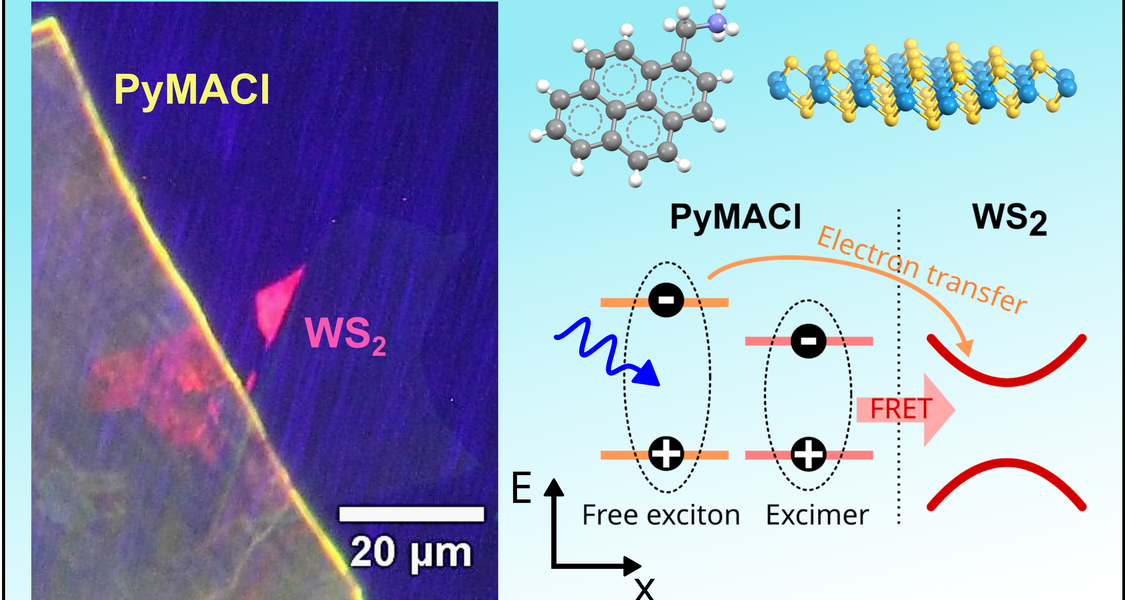24.04.2025 New Publication in RSC Applied Interfaces

Semiconductor heterostructures bear the potential of merging the benefits from different material classes. For example, organic semiconductors are excellent light absorbers and transition metal dichalcogenides offer good electronic transport properties. Heterostructures of both materials could play a role in solar cells or chemical sensors, but they have been little researched to date. The present study is a collaboration between our group and the groups of Prof. Martin Koch (Physics Department) and Johanna Heine (Chemistry Department) and addresses heterostructures of atomically thin layers of tungsten disulphide (WS2) with pyrene-based ionic molecular single crystals, allowing for a well-defined orientation of the molecules at the WS2 interface. Time-and polarization resolved photoluminescence studies reveal efficient population transfer from the organic compound to WS2 and a weakly emissive signature, which could arise from an interfacial state, suggesting efficient electronic coupling between the layers. Moreover, polarized emission of WS2 in the heterostructure is found, potentially originating from a template effect. The work was recently published in RSC Applied Interfaces (DOI: 10.1039/d4lf00351a).